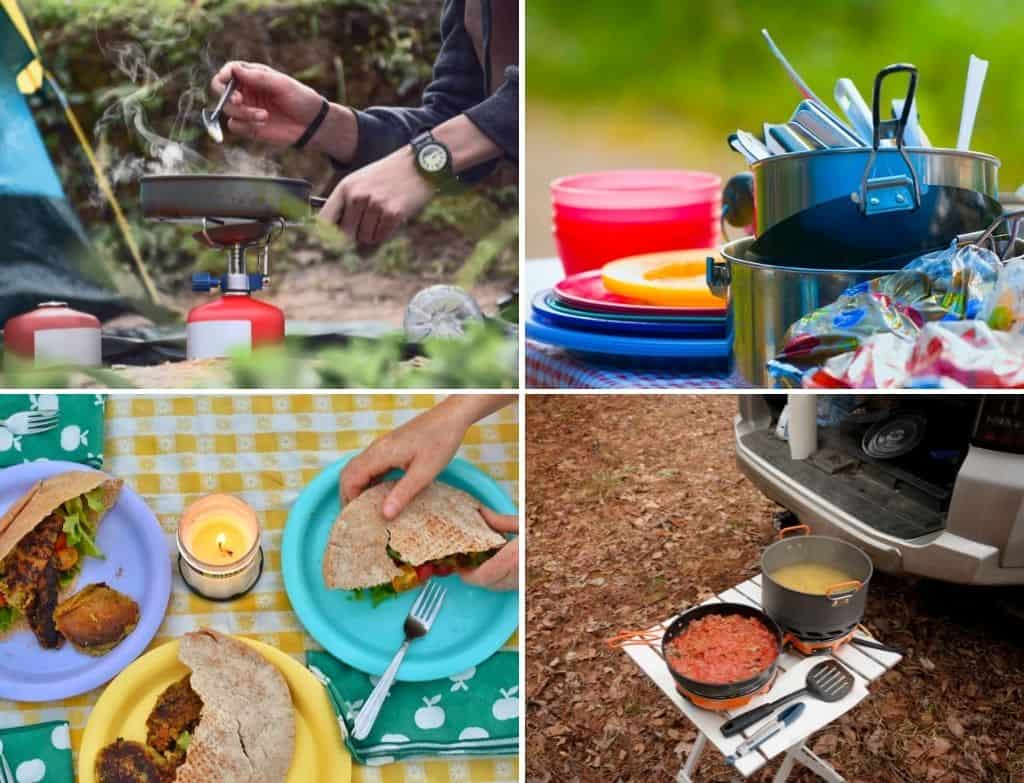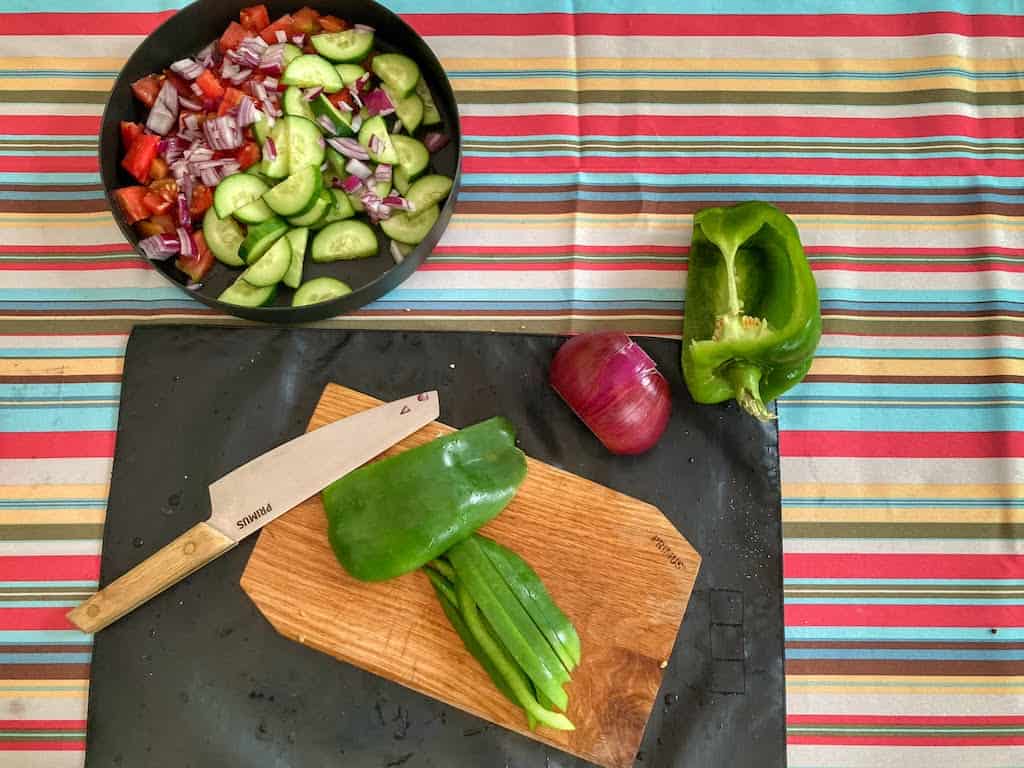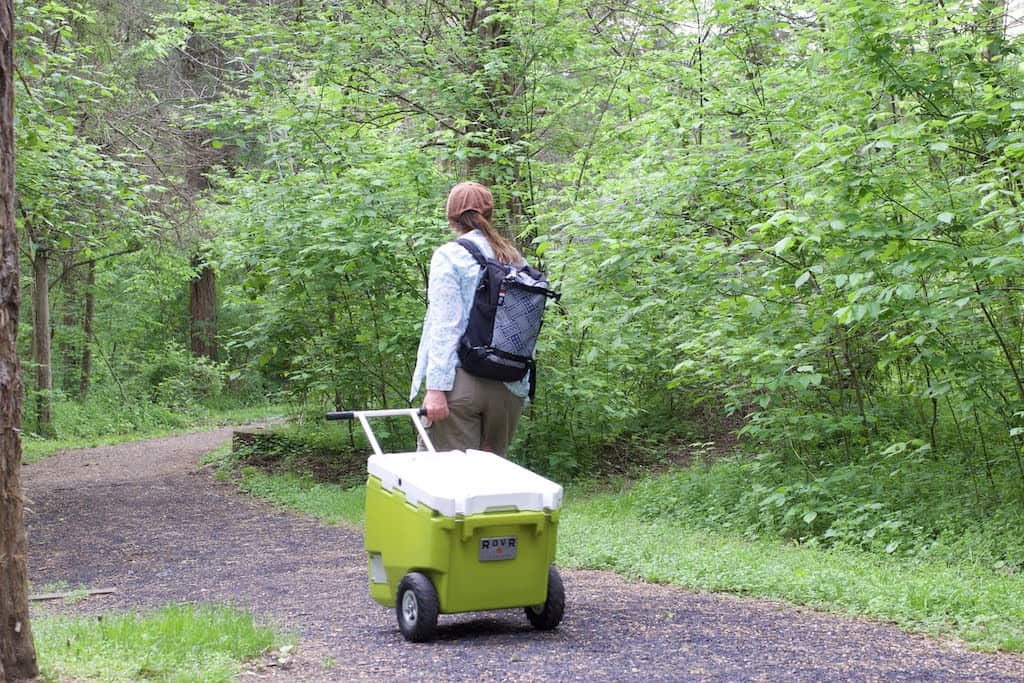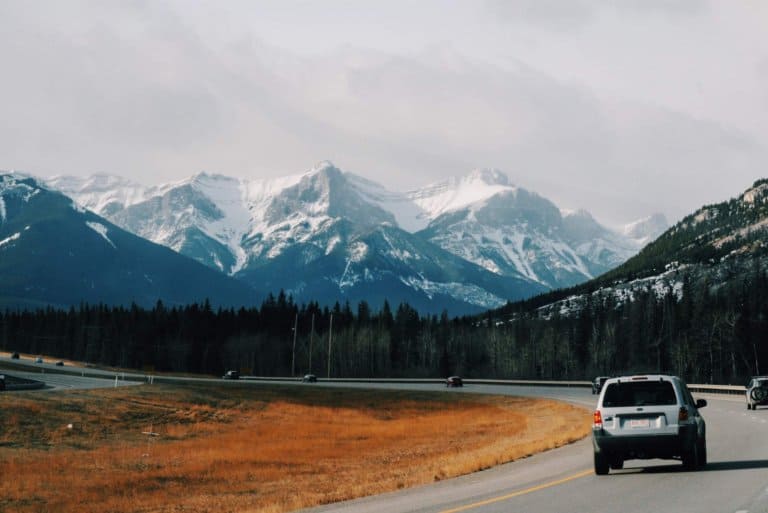Your Perfectly Portable Car Camping Kitchen Setup
Note: Advertising is how we keep this site free for you to enjoy, and we earn a commission from affiliate links that may be included in this post. Thank you for supporting Back Road Ramblers!
Did you know that car camping is tied with RVing as America’s favorite way to road trip across the country?

An organized camp kitchen makes it so much easier to plan last-minute camping trips. When the mood strikes or the weather promises to be extra fine, you can grab your camp kitchen and head out the door without giving it much thought.
That’s because you’ve got a ready-to-go camping kitchen stocked and ready to go!
Today, I’m sharing practical tips for creating the perfect camp kitchen. No more scrambling to gather cooking essentials!
An organized camp kitchen makes camping so much better, and once you have a camp kitchen setup, you’ll realize that camping is the easiest, most affordable, and most fun way to travel.
Here’s how to get started with your amazing car camping kitchen.
P.S. I say ‘car camping kitchen’ as the gear listed below should be transported to your campsite in your vehicle. Most of our camp kitchen gear is too heavy for backpacking.
Table of Contents
Creating the Best Car Camping Kitchen Setup

It’s taken us 20+ years of practice to create the perfect car camping kitchen setup, but we’ve got it down to a science these days.
Our “kitchen” is actually a big duffel bag that holds all of our camp kitchen gear and supplies, but a large plastic tub would work as your kitchen box, too.
Our camping kitchen is very compact since we have to cram everything into our tiny car. It’s even small enough to bring on an airplane (in a checked bag) when we go camping farther from home.
Here’s everything you need for your awesome kitchen setup for car camping.
First Things First: You Need a Portable Camping Stove

The hub of our car camping kitchen is a Coleman 2-burner propane stove, which we use for most of our camp meals. This stove is a workhorse, and we don’t leave home without it for most trips. It folds flat and fits easily into the trunk of our car.
Since we have an electric stove at home, we also use our Coleman Stove when the power goes out. Small propane tanks are readily available at grocery stores, gas stations, and discount stores while traveling.
If space is tight and we need a lightweight option, like when we’re flying to a destination and renting a car, we swap our two-burner stove for this small backpacking stove and buy fuel when we get where we’re going.
Backpacking stoves usually use a combination of butane and propane. This type of fuel is a bit harder to find, but they do sell it at large outdoor, camping, and discount stores.
Read Next: Home is Where You Pitch it – How to Create a Cozy Campsite
The Best Car Camping Cookware and Tableware

Once you have a good camp stove, it’s time to outfit the rest of your camp kitchen.
Keep in mind that you don’t have to buy everything brand new when creating your camping kitchen setup. You likely already have a lot of these items in your kitchen (silverware, plastic dishes, etc.).
You can also find a lot of this stuff at your local thrift store.
Most of the items in our car camping kitchen are light enough to double as weekend backpacking gear in a pinch.
This is what we pack when traveling as a family of four.
Two saucepans: a two-quart and a four-quart. Our all-time favorite set is made by MSR. It consists of two nested saucepans that are incredibly light and suitable for car camping or backpacking. The pots are made of hard-anodized aluminum with a ceramic nonstick coating to disperse heat evenly. The lid fits either pot and has a built-in strainer for pasta, plus the set comes with a removable pot grabber.
A frying pan. We use this frying pan from GSI Outdoors for making pancakes, eggs, and sauteed veggies. A cast iron skillet works great on outdoor fires if you don’t mind the extra weight.
Plates and bowls. We love these plates from MSR because they can be used as both plates and bowls. They are lightweight, easy to clean, and come in different colors. Our MSR plates have also lasted 10+ years.
Silverware. Since our favorite sporks (pictured below) were discontinued and are on their last legs, we have started using dedicated stainless steel cutlery in our camp kitchen. Use what you have.

Travel mugs. Everyone in the family has a personal favorite camping mug. This is mine. Our camp kitchen setup contains a mix of Contigos, enamelware, and Hydro Flask mugs. Again, use what you have, or splurge on something fancy.
Aeropress coffee maker. This is a new addition to the camp kitchen setup, and I admit that it took me a while to fall in love with the Aeropress that was gifted to me for Christmas a few years ago, but it makes the strongest, richest coffee, and it’s quick enough to make single cups in quick succession.
A small cutting board and a chef’s knife. We got this set from Primus, and while I think the price is kind of high, I love that it wraps up in its own little bundle. We bring it with us to the beach, on road trips, and even when we’re staying at hotels.
A water jug or reservoir. When car camping, there’s a good chance that you’ll have a nearby faucet to use as a water supply, but it’s just as likely that you’ll have to walk to the other end of the campground. Be proactive and pack a water jug that you can use to supply yourself with water at your campsite. We pack a two-gallon, collapsible water jug into our camp kitchen.

Camp Kitchen Essentials: The little stuff in our camp cooking setup
Here are some random extras that live in our camp kitchen bag.
- Various cooking utensils: A small whisk, a rubber spatula, wooden spoons, big serving spoons, and a bench scraper.
- Collapsible food storage: We love these food containers from Drip EZ because they lie flat when not in use. They are airtight, leakproof, easy to wash, and fit in our cooler.
- A plastic liquid and dry measuring cup
- Fuel for the stove, a lighter, and matches
- A roll of tinfoil, plastic Ziploc bags, and garbage bags for the cleanup
- A 12-egg plastic carton. Everyone who car camps needs this egg carton. It keeps our eggs safe and dry in the cooler.
A spice kit. For all the cooking emergencies, it helps to have a dedicated camping spice kit. We make our own spice kit at the beginning of the camping season so we can throw it in our camping kitchen without a second thought.
- A barbecue lighter
Read Next: 10 Easiest Camping Meals for Families on the Go
This is the Perfect Car-Camping Cooler

And speaking of coolers, we finally splurged on a fancy cooler that actually keeps our food cold for more than a day! The RovR 60 is a big cooler, but it is great for family camping and car camping kitchen setups for foodies.
RovR coolers are made with high-density foam insulation so ice lasts for a whole week, and it also comes with a dry compartment to keep your veggies and meats from becoming waterlogged. Now that we are heading into an empty nest, we have our eye on the RovR 45 for weekend trips.
You may balk at the price tag of the RovR coolers, but we found that they are comparable to other high-end coolers (like Yetis), and we haven’t found one with such rugged wheels or accessories.
The RovR is a workhorse and comes in all sorts of groovy colors!
Items for Keeping Your Camp Kitchen Tidy
Keep the critters out of your campsite and always tidy up when you’re finished with meals. Here are some basic cleaning items to keep in your car camping kitchen:
Two collapsible sinks. One for washing and one for rinsing. These innovative sinks are designed to be easily folded and stored when not in use.
A washcloth and a towel. We really like using quick-dry microfiber cloths for both washing and drying.
A pot scrubber. Eventually, you’re going to have to clean crusty food off of your favorite camping pan. Get a pot scrubber with nylon bristles on one edge (to protect non-stick surfaces) and a rubber scraper on the other.
A strainer. A small strainer is awesome for capturing food from your dish water before you toss it into the woods. It’s important to do this because if you’ve got food mixed into your dish water, it will certainly attract animals when you dump it in the woods.
Biodegradable camp soap. We get Campsuds at REI. One bottle usually lasts a whole season.
Trash bags. For a weekend trip, I bring single-use shopping bags.
Kitchen towels. Handy for cleaning up spills
Don’t Forget a Kitchen Tarp for Rainy Days!

When you go camping, rainy days are part of the deal, and without a cover for cooking and eating, you’re either snacking on granola bars in the car or heading to the nearest restaurant.
This inexpensive tarp has been worth its weight in gold! When rain threatens, we set it up over our picnic table using trees or tarp poles, depending on the scenario.
Making the Most of Your Car Camping Kitchen
Now, the fun begins! Here are some first-hand tips for making the most of your car camping kitchen wherever you wander.
- Make sure your cookware serves more than one purpose. We use plate/bowl hybrids in our camp kitchen setup so we can eat pancakes or soup out of them, and we try and buy the lightest cookware we can find so that we can also use it for backpacking.
- Create a special recipe book for your car camping meals. I know the smartphone revolution is long past, but I still prefer real books when we’re camping (nothing to recharge). We paste our camp recipes into a compact little journal so that we can access them easily. We have a handful of favorite recipes that are easy to prepare, delicious to eat, and don’t make a lot of dishes. The notebook lives in the side pocket of our kitchen bag.
- Hot beverages are the cat’s meow. Tea, coffee, hot cocoa – whatever makes you happy at home will thrill you when you’re on the road. Generally, we keep things simple, but sometimes we need special hot drinks to pacify the masses.
- Leave the bacon at home. Obviously, you bacon lovers will keep on keepin’ on, but I’m done. Leaving the bacon behind on camping trips was a hard lesson to learn, but I love not scrubbing greasy bacon pans in the woods. They are nearly impossible to clean, and the fat attracts animals and makes everything smell bad. If you do cook bacon or other meat when camping, wrap it in tinfoil and throw it over the fire for less mess.
- Create a spice kit and learn to love it. The spice kit is magic in the woods and a must for all outdoor camping kitchens. It can fix almost every cooking problem, at least the ones that revolve around taste. Our spice kit is a menagerie of plastic bottles filled with our favorite seasonings. This is all packed into a zippered bag that we keep in the pantry (plastic bin).
- Remember the finishing touches. A pretty tablecloth, candles, and cloth napkins make every meal feel special, and there is nothing better in the world than watching the sun go down in a beautiful place while eating a fabulous camp-cooked meal in luxury.

Read This Next: How to Wash Dishes While Camping
Whether relaxing at home or livin’ it up on the road, eating is still one of our family’s favorite pastimes.
We refine our packing, outdoor cooking, and organizing skills with every camping trip. We’d love to hear some of your tips for making the most of your car camping kitchen, as well as your favorite camping gear!
Follow us on social media for more tips for getting outside!






